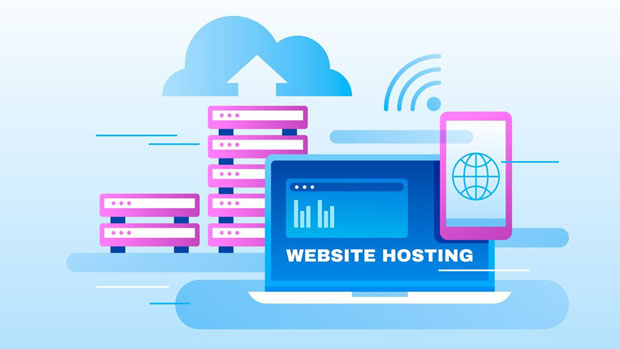In the world of proxy services, the speed of request latency and response time plays a critical role in user experience and efficiency. Proxidize and PYPROXY are two prominent players in this field, offering various proxy solutions to improve performance for a wide range of use cases, including web scraping, data crawling, and security testing. In this article, we will provide an in-depth comparison of these two services, focusing on request latency and response time. We will explore the technical differences between Proxidize and PyProxy, offering insights into their impact on overall performance, and highlight how these factors can influence the efficiency of businesses relying on proxies. Understanding Latency and Response Time in Proxy ServicesBefore diving into the specifics of Proxidize and PyProxy, it is essential to define what latency and response time mean in the context of proxy services. Latency refers to the time it takes for a request to travel from the client to the proxy server and back. It’s a measure of the delay in transmitting data across networks. Lower latency is crucial for real-time applications like gaming, financial transactions, or high-speed data processing. Response time, on the other hand, is the total time it takes for the proxy to receive a request, process it, and return a response. Response time is influenced by factors like server load, network congestion, and the complexity of the request.Both latency and response time are significant in evaluating the performance of proxy services. Businesses and developers require low latency and fast response times to ensure that their applications run smoothly and efficiently.Proxidize Latency and Response Time: An OverviewProxidize is a widely recognized proxy service that provides high-speed, anonymous browsing and reliable connections. When evaluating Proxidize's latency, one of its main selling points is its distributed network of proxy servers, which are spread across multiple geographic locations. This distribution helps reduce latency by routing requests through the nearest available server. Additionally, Proxidize offers a combination of HTTP, HTTPS, and SOCKS proxies, providing users with flexibility depending on their needs.In terms of latency, Proxidize is known to offer relatively low latency, especially when connected to servers located closer to the user. The service also uses intelligent load balancing to ensure minimal delays in data transmission. As a result, Proxidize can maintain low response times, making it suitable for applications that require quick responses, such as web scraping or browsing activities.Response time is generally fast with Proxidize, as the service leverages modern proxy infrastructure designed to handle a large volume of requests. However, the response time may fluctuate depending on factors such as server load and the type of request being processed. Heavy requests or complex tasks, such as large-scale data scraping, may experience slightly higher response times.PyProxy Latency and Response Time: An OverviewPyProxy, on the other hand, is another powerful proxy service known for its focus on speed and reliability. With a range of features tailored to businesses and developers, PyProxy offers advanced proxy capabilities, including a high level of customization and automation.When it comes to latency, PyProxy stands out by offering low-latency proxies, particularly with its premium proxy networks. By using dedicated proxy servers with optimized routing paths, PyProxy aims to minimize the time it takes for requests to reach their destination and return. Additionally, PyProxy employs modern network infrastructure with high-capacity data centers, which helps reduce the impact of network congestion and other factors that could potentially increase latency.In terms of response time, PyProxy is designed to deliver a swift response for requests. The service uses a variety of techniques to maintain performance, such as automated scaling and server load balancing. Response times tend to be consistently low, even during periods of high demand. For businesses requiring large-scale data scraping or frequent API access, PyProxy offers a competitive advantage due to its optimized response time.Key Differences Between Proxidize and PyProxy: Latency and Response TimeNow that we have examined the latency and response time characteristics of both Proxidize and PyProxy, let's take a deeper look at the key differences that could affect their performance in real-world use cases.1. Server Network and Geography: One of the significant differences between Proxidize and PyProxy is their server network. Proxidize offers a broad range of servers located in various countries, which helps reduce latency for users in specific regions. PyProxy, while also offering a wide network, focuses on premium proxy servers with optimized connections. Users may find that PyProxy’s servers are faster for regions where they have high-capacity data centers.2. Proxy Types and Customization: Proxidize supports multiple proxy types, including HTTP, HTTPS, and SOCKS proxies, allowing users to choose the best fit for their needs. In contrast, PyProxy provides a more customizable approach, offering a greater level of flexibility in terms of proxy settings and automation. This could be a deciding factor for users who need highly tailored proxy configurations.3. Load Balancing and Scalability: Both services incorporate load balancing, but PyProxy’s infrastructure is designed to handle high volumes of traffic more efficiently. PyProxy offers automated scaling to ensure that users experience minimal delays during peak traffic times. Proxidize, on the other hand, may have slightly longer response times during high traffic periods, as its scaling capabilities are less automated compared to PyProxy.4. Cost-Effectiveness: For businesses and individuals looking for cost-effective solutions, Proxidize is often considered a more budget-friendly option. It offers competitive pricing while still delivering low latency and fast response times. PyProxy, while offering premium services and performance, comes at a higher price point, which could be a consideration for cost-conscious users.Which Proxy Service is Better for You?When it comes to choosing between Proxidize and PyProxy, the decision ultimately depends on your specific needs and requirements.- For businesses that prioritize cost-efficiency and need reliable, low-latency proxies for tasks like web scraping and general browsing, Proxidize is an excellent choice. Its flexible proxy types, low-cost plans, and decent performance make it suitable for many use cases.- For enterprises or developers who require advanced features, faster scaling, and minimal response time, PyProxy may be the better option. Its premium infrastructure and automated scaling ensure that response times remain low, even during peak demand, making it a solid choice for heavy-duty tasks like large-scale data scraping or high-traffic applications.Conclusion: Choosing the Right Proxy ServiceBoth Proxidize and PyProxy offer excellent services with distinct advantages when it comes to request latency and response time. Understanding your needs, whether it’s cost-effectiveness, scalability, or advanced customization, will help you make the right choice. Whether you choose Proxidize for its affordability or PyProxy for its premium features, both services are designed to optimize performance and reduce latency, ensuring efficient proxy operations for businesses and developers alike.
Sep 17, 2025



































































